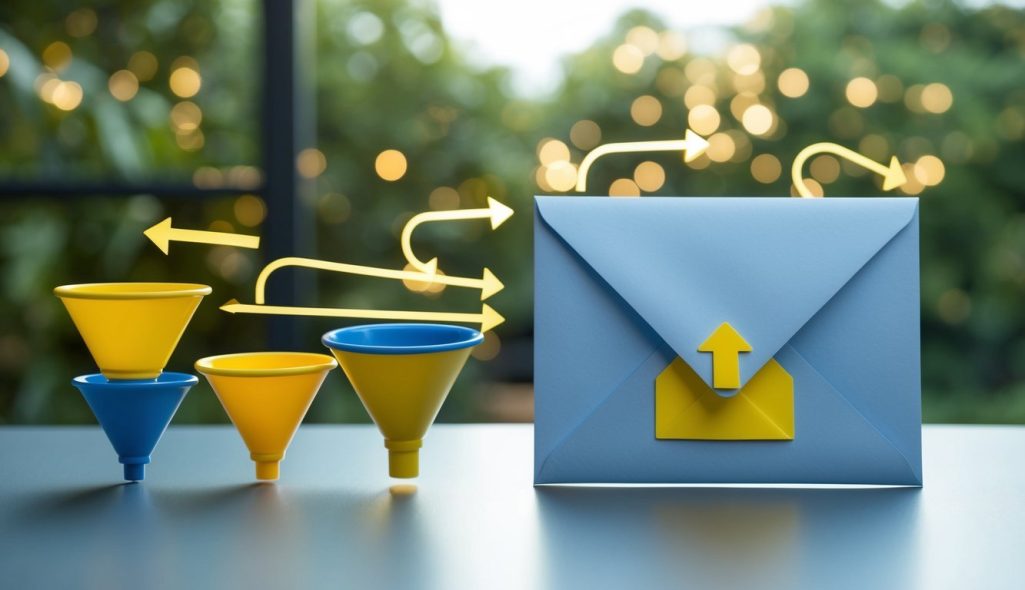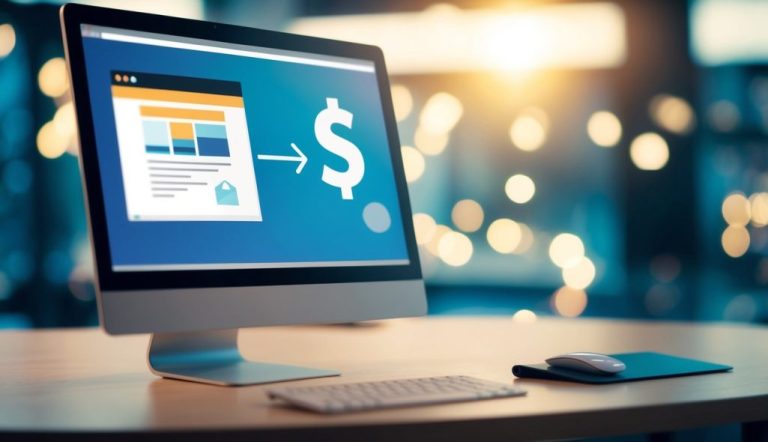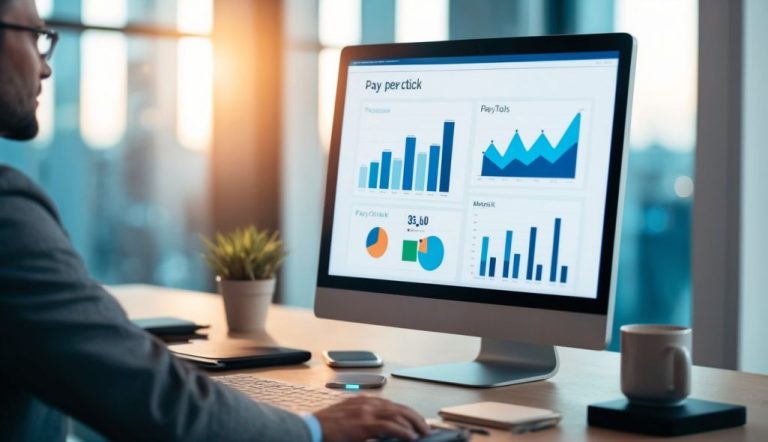In the world of digital marketing, you need to guide customers from the moment they learn about your brand to the point where they make a purchase. An email marketing funnel is a strategic tool used to nurture potential customers through each stage of their journey, turning them from browsers into buyers. The key benefit of an email marketing funnel is its ability to enhance trust and brand authority by delivering personalized content that resonates with your audience at each step.

Crafting an effective funnel requires you to know what makes up each stage. From capturing email addresses to creating personalized email sequences, knowing the anatomy of the funnel helps you design a customer experience that drives engagement and increases conversions.
By combining the right email marketing strategies with technology, you can automate and optimize your approach, ensuring each potential customer experiences a seamless journey.
Key Takeaways
- Guide potential customers through a strategic email marketing funnel.
- Enhance conversions with personalized and automated emails.
- Build relationships and trust throughout the customer journey.
Fundamentals of Email Marketing
Email marketing is a powerful tool in digital marketing. It helps you directly reach your audience, increase return on investment (ROI), and build relationships. The following subsections explore key elements that make email marketing effective and its role in the broader marketing landscape.
Understanding Email Marketing
Email marketing is about sending messages directly to people who might be interested in your products or services. It’s an essential form of direct marketing. You can personalize and target your audience effectively using tools and data analytics. With the right approach, you can achieve significant ROI, as email remains one of the most cost-effective methods to engage customers.
The main focus is to keep your audience informed and engaged. You can achieve this with regular newsletters, promotional offers, and updates about your brand. Consistency and value are crucial. You want your emails to be informative and relevant so recipients take action, such as visiting your website or making a purchase.
Key Components of Effective Email Marketing
Creating a successful email marketing strategy involves several components. First, build a strong email list with genuine subscribers who have shown interest. This list forms the backbone of your campaigns.
Next, craft compelling content tailored to the preferences of your target audience. Your emails should be visually appealing, with clear calls to action.
A/B testing is a valuable technique. You can experiment with different subject lines, layouts, and send times to see what resonates best.
Don’t forget about automation. Automated emails can save time and ensure timely communication, such as welcome messages for new subscribers or reminders for abandoned carts.
Monitoring your campaign performance helps you refine strategies, ensuring continued success and growth.
The Role of Email Marketing in Digital Marketing
Email marketing acts as a bridge within your wider digital marketing efforts. It supports other channels like social media and search engine marketing. You can integrate it with digital marketing tools to provide a seamless user experience.
For example, you might use email campaigns to drive traffic to your website or boost engagement on social platforms.
It also contributes significantly to lead nurturing and conversion. By keeping your brand in front of potential and existing customers, email marketing helps to maintain interest and loyalty. As a critical element of digital marketing strategies, it connects with audiences in a way that many other channels cannot, offering a high level of personalization and direct communication.
Anatomy of an Email Marketing Funnel
In an email marketing funnel, potential customers progress through several stages before becoming loyal clients. Each stage is crucial in guiding your audience along the buyer’s journey toward conversion and beyond.
Awareness Stage
The awareness stage is where potential customers first learn about your brand. This stage focuses on making a memorable first impression by addressing the pain points and interests of your audience.
Through engaging content in emails, like blog articles or introductory offers, you attract attention and inform your audience about your products or services. A lead capture system, such as an opt-in form on a website, plays a vital role here by getting prospects into your funnel and beginning their journey in building brand recognition and trust.
Interest Stage
Once you’ve captured the attention of potential customers, the interest stage is where you begin to engage them further. Here, it’s crucial to provide more detailed information about your offerings that connects with the specific interests of your audience.
You may want to offer resources such as eBooks, webinars, or demos. Through a well-crafted series of sales funnel emails, you can build a deeper connection with prospects and position your brand as a valuable resource. Encouraging engagement through surveys or feedback can also help you refine your content to better meet their needs.
Consideration Stage
At this point, potential buyers start weighing their options and consider purchasing your product or service. Emails during this stage should provide clear, detailed content that highlights the benefits and uniqueness of your offerings.
Testimonials, case studies, or comparison guides can be particularly effective, as they offer convincing reasons to choose your brand. Discounts or special offers can motivate action, nudging prospects closer to making a buying decision while further solidifying their interest in what you offer.
Conversion Stage
The conversion stage is when prospects make a purchasing decision. Your emails should focus on closing the deal by addressing any remaining concerns and assuring potential buyers of their decisions.
Offering a seamless checkout experience, straightforward calls-to-action, and timely follow-ups with purchasing instructions, keep your prospects on track. Additionally, reinforcing the security and credibility of your transaction process can improve buyer confidence, leading to successful conversions.
Loyalty Stage
After a conversion, it’s crucial to continue nurturing the relationship, transitioning customers into repeat buyers and brand advocates.
Loyalty is achieved by offering ongoing support, exclusive deals, or personalized recommendations that reflect their purchase history. Staying connected through regular updates or newsletters keeps your brand relevant in their minds.
Measuring customer satisfaction and seeking feedback through surveys can enable you to fine-tune your strategies, ensuring you meet the evolving needs of your loyal customer base. This continued engagement fosters a long-term relationship, boosting customer retention and brand advocacy.
Creating the Email Marketing Funnel
An effective email marketing funnel helps guide potential customers through their journey. By setting clear objectives and using strategies like segmentation and automation, you can enhance engagement and conversions. Focus on understanding your target audience and delivering tailored messages at each stage.
Setting Objectives and Defining the Target Audience
First, clarify your goals. Are you trying to increase sales, boost engagement, or grow your email list? These goals will shape your approach.
Next, define who you are targeting. Create buyer personas to understand their needs and pain points. Consider demographics like age, location, and interests. A well-defined target audience helps craft messages that resonate. Use this guide to creating an effective email marketing funnel for further insights into audience identification.
Developing the Lead Magnet
A lead magnet is essential for attracting subscribers. It should offer value in exchange for contact information. Examples include ebooks, checklists, or webinars.
Make your lead magnet relevant to your audience’s needs. An engaging lead magnet will increase opt-in rates. Ensure your signup forms are easy to complete and visible on your website. Properly placed opt-in forms can significantly boost your email list.
Crafting an Engaging Welcome Series
The welcome series sets the tone for future interactions. After a subscriber opts in, send a series of welcome emails to introduce your brand.
Aim for at least three to five emails, spaced out over time. Share your brand story, highlight unique offerings, and provide useful information. Use welcome emails to build trust and anticipation for what’s to come. Consistency in messaging and design is key in creating a robust welcome series.
Designing a Segmented Email Campaign
Segmentation allows you to send targeted messages. Divide your audience based on factors like behavior, purchase history, or engagement level.
Customized content increases the relevance of the email and improves engagement rates. By targeting specific groups, such as repeat buyers or inactive users, you’re more likely to drive actions that align with your goals. Understand how to segment effectively and creatively with these examples of email segmentation.
Incorporating Automation and Personalization
Automation streamlines your email processes. Set up automated sequences for events like abandoned cart reminders or thank you emails after purchase.
Personalization enhances subscriber experience. Use customer names and tailor content to their interests. Automated personalized emails can significantly increase engagement and conversion rates. Leverage tools to personalize and automate effectively without losing the human touch.
Content Strategies for Each Funnel Stage
Creating effective content strategies for each stage of the email marketing funnel is essential. Different types of content are required to address the unique needs of potential customers at each stage, from generating awareness to fostering loyalty.
Educational Content for Awareness
In the awareness stage, educational content helps introduce potential customers to your brand and products. Focus on providing information that answers common questions and builds initial interest. Blog posts, infographics, and short videos that explain your industry or problem spaces can be valuable.
Tips:
- Use simple, clear language.
- Highlight benefits with clarity.
- Share content on social media to reach a wider audience.
By prioritizing educational content, you position your brand as a trusted resource.
Engaging Content for Engagement
Once prospects are aware, the next goal is to keep them interested. To maintain engagement, aim for content that is interactive and shares stories or customer experiences. Social proof, such as testimonials and case studies, can support this stage.
Ideas:
- Polls and quizzes
- User-generated content
- Interactive guides
Keep engagement consistent to lead smoothly into the next stage.
Exclusive Content for Consideration
As leads move into consideration, exclusive content becomes important. Offer in-depth guides, webinars, or free trials that provide more detailed insights into your products or services. Highlighting value through exclusive content encourages prospects to see you as a preferred choice.
Create:
- Detailed comparisons
- Webinars on complex topics
- Access to premium content
Make sure your content at this stage shows value and differentiation.
Targeted Offers for Conversion
When prospects are ready to convert, targeted offers can help close the deal. Personalized emails that include time-sensitive offers or a soft pitch for upsell and cross-sell opportunities are effective here.
Use techniques like:
- Discount codes
- Personalized recommendations
- Time-limited promotions
These offers should create a sense of urgency and prompt decisive action from the leads.
Loyalty Programs for Retention
To ensure customer retention, building a strong loyalty program is crucial. This stage focuses on enhancing the brand experience and maintaining long-term relationships with existing customers. You might offer rewards for repeat purchases or exclusive access to new products.
Consider offering:
- Points for purchases
- Exclusive member-only sales
- Birthdays or anniversary gifts
Your goal is to make customers feel valued and increase their lifetime value.
Optimizing the Funnel for Conversion
Boosting your email marketing performance involves key techniques like improving open rates and click-through rates, leveraging A/B testing, and thoroughly analyzing your campaigns for a better return on investment. Here’s how you can achieve significant improvements.
Improving Email Open and Click-through Rates
To enhance open rates, eye-catching subject lines are crucial. Personalize these lines to engage your audience. An example could be using the recipient’s name or a specific interest relevant to them.
Short, compelling, and relevant subject lines increase open rates.
For click-through rates, include clear and engaging calls to action (CTAs). Position these CTAs strategically within your email to guide your readers. Use buttons or bold font to make them stand out. The right balance of informative content and persuasive CTAs can greatly boost your click-through rate.
Utilizing A/B Testing for Effective Campaigns
A/B testing helps you identify what works best for your audience. You can test different elements like subject lines, email content, and sending times to see what leads to better results. Try sending emails at different times to see which time slot generates higher open rates.
Test different designs and formats to see what appeals most to your subscribers. Keep tests simple by changing one variable at a time to determine which change made a difference. This method provides clear insights into what helps in increasing engagement and conversions.
Analyzing and Optimizing Emails for Better ROI
To enhance your return on investment, regularly analyze the performance of your emails. Use metrics like open rates, click-through rates, and conversion rates to find out what’s effective and what isn’t. These measurable results help in making data-driven decisions.
Optimize email content based on feedback and engagement data. Make adjustments to images, copy, and layout as needed. Regularly updating your strategy ensures that the emails remain relevant and effective, ultimately improving your ROI.
Advancing Customer Relationships
Developing strong customer relationships is crucial for thriving in competitive markets. By nurturing leads, you build trust and authority. Encouraging referrals and word-of-mouth further solidifies your brand’s presence.
Nurturing Leads into Customers
To turn leads into customers, focus on delivering targeted content. Personalized emails help you connect with your audience by addressing their specific needs. Use segmented lists to ensure the right messages reach the right people at the right time.
Offer value in your communications. Sending how-to guides or exclusive deals can encourage a lead to make a purchase. This process, part of an effective email marketing funnel, transforms prospects into paying customers.
Building Trust and Authority
Building trust is essential for customer loyalty. Establish your brand as an authority by sharing expert insights and helpful information. Regularly communicate with customers using tips, news, or stories that reflect your expertise.
Avoid hard-sell tactics that might push potential customers away. Instead, present your brand as a partner in their journey, which can increase the likelihood of repeat purchases. Highlighting customer testimonials or case studies can also strengthen your authority by showing real-world success stories.
Encouraging Referrals and Word-of-Mouth
Satisfied customers can become brand advocates who share their positive experiences. Encourage them to refer friends and family by offering incentives like discounts or special offers. This approach not only brings in new customers but also reinforces existing customer relationships.
Word-of-mouth is a powerful tool that can significantly increase your reach. Create shareable content or social media campaigns to get people talking about your brand. Developing a referral program with unique benefits fosters a sense of loyalty and encourages more people to spread the word about your products or services.
Using Technology to Enhance Funnels
Modern technology offers many ways to boost the efficiency of your email marketing funnel. You can reach more customers and increase sales by using email automation tools, integrating these systems with e-commerce platforms, and applying customer relationship management (CRM) systems for deeper insights.
Leveraging Email Automation Tools
Email automation tools are essential for streamlining your marketing efforts. These tools help you send targeted emails based on user behavior, saving time and ensuring consistency. Automation tools can segment your audience, personalize messages, and schedule emails optimally.
This approach improves lead nurturing by delivering relevant content at the right stage of the customer journey. Using tools like Mailchimp or Sendinblue, you can automate tasks like welcome emails, follow-ups, and promotions. This targeted communication fosters relationships and increases conversion rates by responding quickly to customer actions and preferences.
Integrating with E-Commerce Platforms
Integrating your email marketing with e-commerce platforms enhances your ability to track and act on customer data. Linking platforms like Shopify or WooCommerce with your email marketing software enables automated updates for cart abandonment reminders, purchase follow-ups, and personalized product recommendations.
This connection helps you to better understand customer behavior and enhances the shopping experience by delivering timely emails that encourage conversions. An integrated system offers seamless synchronization of customer data, ensuring your email campaigns are always relevant and personalized.
Exploiting CRM for Deeper Insights
A CRM system provides valuable insights into customer interactions and behaviors, helping you refine your email marketing strategies. By using CRM data, you can track engagement, segment your audience more accurately, and tailor your messages for better lead nurturing.
Integrating your CRM with your email marketing allows access to detailed analytics about customer preferences and purchasing patterns. For instance, tools like HubSpot and Salesforce offer features to analyze email campaign performance and customer feedback.
With these insights, you can design more effective campaigns that align with customer needs, ultimately enhancing the success of your marketing funnel. This comprehensive view enables you to build stronger relationships and improve retention by addressing customer concerns and preferences directly.
Case Studies and Examples
Exploring real-life examples of email marketing funnels can provide valuable insights into effective strategies. By examining case studies, you can learn how successful companies structure their emails to engage customers. Additionally, looking into industry-specific strategies helps to tailor your approach to maximize results.
Successful Email Marketing Funnel Examples
Case studies reveal how top companies use email marketing funnels effectively. For instance, CrazyEgg, a SaaS company, showcases a multi-stage funnel that begins with building awareness. They guide potential customers through awareness, interest, decision, and action stages to convert them into paying users. This process increases customer trust and retention by providing value at each juncture.
Another example comes from Cyberbackpack, a backpack company. They combined face-to-face marketing tactics with a well-crafted funnel, earning $28,000 from two events. This strategy highlights the importance of integrating offline interactions with email campaigns to boost engagement and sales.
Analyzing Industry-Specific Email Strategies
Different industries require unique approaches to email marketing. For B2B SaaS companies, personalization and detailed tracking are crucial for nurturing leads through the funnel.
For example, in the B2B SaaS sector, funnel analysis helps tailor messages to meet user needs, ensuring higher conversion rates.
In consumer tech and ecommerce, automation plays a significant role. Automated emails help businesses maintain consistent engagement with potential buyers. Personalization in these industries helps in building relationships and encouraging repeat purchases.
Financial services might focus on trust-building, using clear and informative emails to build customer confidence over time. Tailoring strategies to your industry can significantly enhance the effectiveness of your email marketing funnel.
Frequently Asked Questions
Setting up an email marketing funnel involves understanding its core stages and strategies to improve conversions. Each part of the process can be measured for success and has unique challenges to navigate.
How can I effectively set up an email marketing funnel?
To set up an effective email marketing funnel, start by clearly defining your goals. Segment your audience based on interests or behaviors. Use a combination of educational and promotional content to nurture your subscribers. Make sure your emails are automated and tailored to each stage of the funnel to enhance engagement.
What are the core stages of an email marketing funnel?
The core stages of an email marketing funnel typically include awareness, consideration, conversion, loyalty, and advocacy. Each stage targets a specific point in the customer journey, helping to guide prospects from initial interest to becoming loyal customers.
What strategies improve conversion rates within an email marketing funnel?
Improving conversion rates involves crafting compelling subject lines, personalizing the email content, and ensuring clear calls to action. A/B testing different email elements can help determine what resonates best with your audience. It’s also important to track performance metrics and adjust your strategies accordingly.
How do I measure the success of an email marketing funnel?
Success can be measured by analyzing metrics such as open rates, click-through rates, and conversion rates. Tracking these metrics will help you understand how well each stage of your funnel performs. Additionally, you can monitor subscriber growth and engagement over time to assess the overall health of your funnel.
What are some common pitfalls to avoid in email marketing funnels?
Common pitfalls include failing to segment your audience, neglecting to personalize content, and not employing automation. Additionally, sending too many or too few emails can hinder effectiveness. Always ensure your funnel aligns with your broader marketing goals and consistently review and refine your strategies.
How do email marketing funnels differ from other types of digital marketing funnels?
Email marketing funnels specifically focus on using email to guide prospects through different stages of the customer journey. They rely heavily on direct communication and personalization to nurture relationships. The aim is to build engagement and trust through tailored, relevant content.





